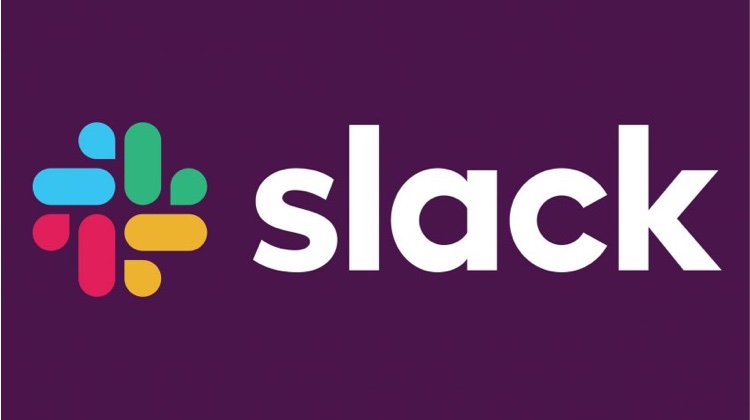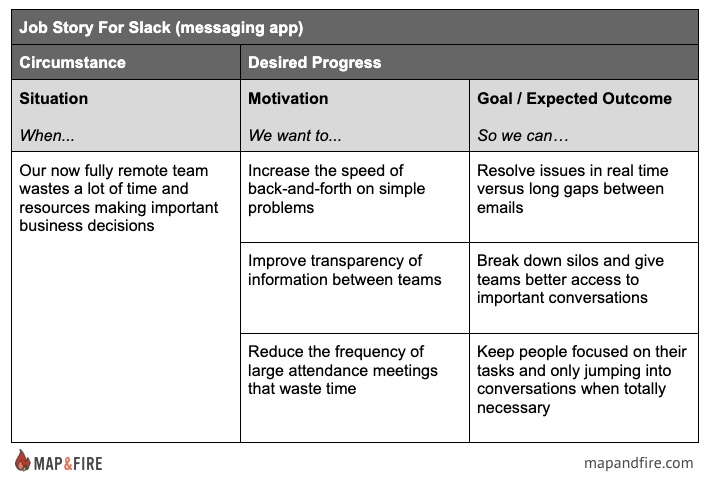
This article was featured in the November 2022 issue of Foundr Magazine
(click to view the piece)
In today’s wildly competitive landscape, there’s nothing better than a customer who arrives at your brand’s front door ready to buy. They’re aware of their challenges, they understand their options, and they’ve come specifically for your solution.
With leads like that, the sales process is pure bliss.
In the service space your team now gets to spend less time pitching and more energy on building personal relationships. In SaaS or ecommerce business, conversion rates soar as the main task becomes guiding them on what to buy, instead of why to buy.
Creating these dream-like leads is what Demand Generation Marketing (aka. Demand Gen) is all about.
Demand Generation vs Lead Generation
Traditional lead generation focuses on targeting a specific type of customer and capturing their contact information (often through downloads of ebooks, whitepapers, newsletter signups, etc.). After that, they get fed into a sales and marketing funnel.
That model can generate a high volume of leads but it’s extremely hard to know if they’re qualified.
The result is a lot of wasted money and resources pursuing potential customers who simply aren’t ready to buy.
Demand generation, on the other hand, emphasizes educating the buyer about their challenges and providing consistent value to them. Over time, your brand builds authority around a unique approach to solving your buyer’s problems.
Demand gen also utilizes multiple touch points to stay in contact with customers. This allows the brand to stay top of mind and provide valuable help along the buyer’s often winding buying journey.
The end result is that by the time that customer is ready to pull the trigger, you’ve created a clear case for your brand as the best solution. And when they finally make contact with you they’re primed and ready to go.
To make this work though it’s not enough to pump out lots of content.
It’s critical that the ideas you put out have a strategic connection back to your brand and offering.
That’s where your brand positioning comes into action.
Here are 3 steps on how to leverage your brand positioning strategy to start demand generation marketing.
Demand Generation Strategy Step #1:
What are your customer’s biggest challenges?

To connect with your customers through demand generation marketing you first need a clear understanding of their challenges.
To do this we can use two things:
- Frameworks to identify your customer’s needs
- Research to gather qualitative and quantitative data to validate those needs
For (1), the frameworks we use most in our brand strategy work at Map & Fire are:
- Jobs to Be Done: this helps us separate out a customer’s motivations and desired outcomes, along with the circumstances of when they need these things
- Elements of Value: this helps us identify the specific types of value they seek out when looking for a solution to their needs
For (2), the consumer research side, we combine:
- Customer Interviews: this gives us direct access to customers so we can hear how they talk about their challenges and dig deeper into what motivates them
- Customer Surveys: this let’s us collect a larger volume of data to help spot patterns in what customers think and value
Again, the goal here is to improve your depth of understanding about your customer’s problems – and get clarity on how you talk about those problems.
Demand Generation Example: Slack (Messaging App)

To highlight how this strategy can work, let’s look at a brand most of us are now familiar with in the business world – Slack.
Slack is an app that provides private, real-time chat for businesses. It’s designed to help teams get more efficient in how they communicate.
Here’s a quick Jobs to Be Done Story around the challenges a target customer for Slack might experience:
- Circumstance: Our now fully remote team wastes a lot of time and resources making important business decisions
- Motivations: Increase the speed of back-and-forth on simple problems, Improve transparency of information between teams, Reduce the frequency of large attendance meetings that waste time
- Outcomes: Resolve issues in real time versus long gaps between emails, Break down silos and give teams better access to important conversations, Keep people focused on their tasks and only jumping into conversations when totally necessary
Some B2B Elements of Value that connect to this Job Story include:
- Functional: Time Savings, Cost Reduction, Information, Transparency, Connection
- Emotional: Reduced Anxiety, Growth & Development
- Aspirational: Vision
Note that at this stage in the process, we’re not talking about Slack specifically or even chat apps in general.
What we’re focused on is understanding the relevant problems people face that Slack would want to speak to in their content.
The next step would be to validate and prioritize these ideas with research. But for the sake of our example we’ll assume these are valid and top of mind for the target customer.
Demand Generation Strategy Step #2:
Why are the solutions your customers use broken?

Now, we need to think about competition. What are some common methods or tools your customers use for these needs that are falling short?
In some cases, it may be valuable to look at direct competitors. If your brand’s category has a dominant leader or if there’s a brand you often go head-to-head with, you can use that to draw specific contrast with them.
But it’s also good to think about competition in a more generalized sense as well.
What are the categories of solutions your customers use? How can you highlight their weaknesses related to the Job Stories and Elements of Value that you know your customers care about?
You can almost think of these as the shared enemies that you help your customers defeat.
Demand Generation Example: Slack’s Shared Enemies
Going back to our Slack example, here are some of the areas where teams struggle and the tools or behaviors that are often to blame:
“Poor speed of back-and-forth on simple problems”
- Enemies: Email can be very slow and cumbersome for resolving problems quickly, and live conversations or meetings involve extra scheduling and logistics
- Weaknesses: Wastes time, Wastes money, Creates anxiety
“Lack of transparency of information between teams”
- Enemies: Personal conversations and meetings create silos of information that limit access and don’t produce complete records for teams to refer to later on
- Weaknesses: Lack of transparency, Lack of connection, Poor access to information, Inhibits growth & development, Inhibits shared vision
“High frequency of large attendance meetings that waste time”
- Enemies: Meetings often include attendees that don’t need to actively contribute, yet who would benefit from seeing quick references to discussions
- Weaknesses: Wastes time, Wastes money
Now we have a foundation of enemies and talking points to focus on with our target audience. In Slack’s case it’s around the inherent problems of two big categories: Email and Meetings.
By focusing marketing efforts on these topics, we can:
- Raise awareness and create engagement around these shared pain points
- Build authority as a brand that’s knowledgeable and has expertise in this space
- Educate about problems to show their impact on growth, profitability, etc.
- Encourage customers to start considering solutions
Your brand can explore these topics via channels like:
- Podcast speaking with guests who’ve experienced these issues or are working on them
- LinkedIn and other social media content targeted at your ideal customers
- Articles and blogs to reach those who are searching around these issues
- Speaking opportunities to address relevant audiences
Through reach and repetition, these start to generate demand for solutions from customers who may have experienced these issues but hadn’t been considering new ways to resolve them.
Demand Generation Strategy Step #3:
How does your brand provide a new, better path?

In this last link of the demand generation chain, you demonstrate why your brand’s offering is a solution to these shared pain points.
As you continue to raise awareness, educate, and engage your audience they’ll naturally start to look for solutions. And because your brand is the source that’s consistently demonstrated expertise around the problem, you’ll be at the top of their consideration list.
At this stage, the hard work is done from a demand gen perspective, this is mainly about guiding the customer over the finish line.
Demand Generation Example: Slack’s New, Better Path
Here we’re simply mapping the enemies and shared pain points we’ve promoted through the demand generation marketing back to the benefits of the brand’s solution.
“Poor speed of back-and-forth on simple problems”
- Slack is perfect because: It allows teams to hash out issues with quick back-and-forth chats right in the moment
- Strengths: Saves time, Saves money, Reduces anxiety
“Lack of transparency of information between teams”
- Slack is perfect because: There’s a record available of chats that’s saved and searchable to help loop in individuals or refer to important points later on
- Strengths: Creates transparency, Improves connection, Provides access to information, Supports growth & development, Contributes to a shared vision
“High frequency of large attendance meetings that waste time”
- Slack is perfect because: It helps replace the volume of meetings needed and allows those who only need the output of a discussion to stay focused on their work
- Strengths: Saves time, Saves money
For a potential lead who’s been consuming demand generation marketing from Slack over the course of weeks or months, this type of offering is a no-brainer.
The lead has built up trust with the brand due to their authority and expertise and because the lead has already received a high level of value through Slack’s content.
The last step for the lead is to resolve their issues via the brand that seems to understand their problem better than anyone else.
These Are Your Demand Generation Marketing Pillars

Demand generation can be a powerful tool to improve the efficiency of all your sales and marketing efforts and fuel new growth.
To get started, we need to look at your business through a lens of brand positioning:
- What your customer’s biggest challenges are
- Why existing competitor’s offerings and solution categories fall short
- How your brand provides a new, better path
With those pillars in place, your business will have a strong set of ideas to generate content and conversations in the market to generate demand.
It will take time, but with consistent effort you’ll start to see more and more of those ideal customers showing up informed, educated, and convinced that your brand is exactly what they need.

Get Help With Your Brand Positioning
If you’re ready to build stronger connections with your customers, reach out for a consultation. We’ll help you transform your best business thinking into an actionable, shareable, growth-oriented guide. Click below to learn more about the Brand Guidebook process.



